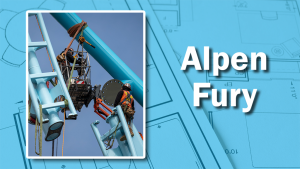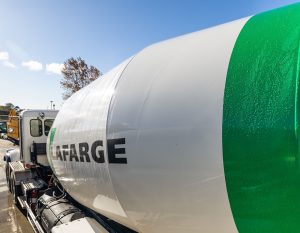There’s a lot more than meets the proverbial eye when it comes to what lies beneath in a landfill. A complicated infrastructure system entombs the waste matter so, even a decade on, an unearthed piece of organic matter should still be intact.
"There’s the misconception that a landfill is a giant composter, but a modern landfill really is a garbage tomb," explained Blair Riddle, the City of Calgary Waste & Recycling Services’ communications team supervisor.
"You can dig up a section that has been buried for 10 years and pull out a steak that still looks like a steak."
Calgary has three landfills, or waste management facilities as the city refers to them: East Calgary, Shepard and Spy Hill.
Each landfill is made up of a number of cells."
Landfill Operations Leader Martin Ortiz defines a landfill cell as an "engineered depression," designed to accept waste.
Currently, Spyhill is undergoing Stage Three, Phase Five construction of a new cell. Construction started in mid-July.
Each cell, like the one under construction, consists of a primary liner, usually 1-to-1.2 metres of compacted clay, and a secondary liner, made of a geo-synthetic membrane. On top of that is the drainage layer.
Often this layer is made of gravel but, in the case of Calgary landfills, it’s also comprised of shredded tires.
Ortiz said Calgary started using liners in landfill cells around 1990 and that landfill infrastructure technology has remained fairly consistent since then. A main collector pipe flows from each cell that drains into a tank located at the cell’s lowest point, diverting leachate away from the ground water.
"Leachate is more polluted than sewage," explained Ortiz. The collected leachate is pumped out of the tank into a leachate tanker truck and then transported to a wastewater treatment plant. Cell size differs from landfill to landfill.
At Calgary’s Spy Hill waste management facility, for example, there are three main stages, each consisting of about 20 landfill cells.
The cell currently under construction at Spy Hill measures 200 metres by 200 metres with a total height of 35 metres.
Whissell Contracting Ltd. is the contractor on the project.
Akram Hamad, the Infrastructure Delivery Leader, estimates this new cell should last for five years.
Ortiz said individual cells are necessary from a proper waste management perspective, but that they’re all still linked to one another and, when a stage is complete, it’s like one giant cell.
Hamad said one thing that’s new with the Stage Three Phase Five landfill cell is that the drainage level will consist entirely of shredded tire, without any gravel. This is a first for the City of Calgary.
He anticipates future cells in Calgary landfills will follow suite, as using shredded tires costs less.
Once a cell has been filled with waste, Ortiz said, it’s "capped with an engineered cap," consisting of soil and vegetation, and a landfill gas collection system is installed.
Each landfill cell has its own set of vertical extraction wells, as many as 10–20 depending on the cell’s size.
The collected gas then goes to a treatment system, which, in Calgary landfills, is a flare.
Construction on the Stage Three Phase Five cell is scheduled to wrap in October.










Recent Comments
comments for this post are closed